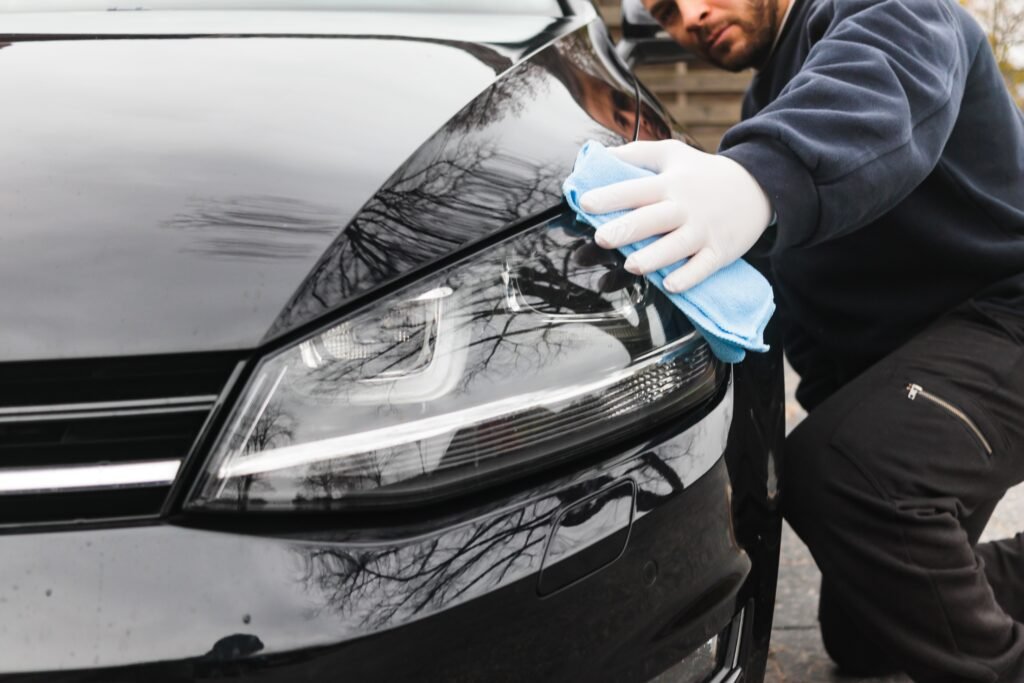How to Wax a Car at home?
Cars are some of the brighter and shinier machines to roam the planet, but the shine dulls over time if you don’t take good care of them. Maintaining the new look of car waxing is as essential as car cleaning.
Car waxing and buffing help return the showroom-like glow to your car. It also plays a crucial role in insulating your car’s exterior from harmful polluting agents. Plus, it adds a protective layer over your car’s clear coat to protect it from bad weather, salt accumulation, bird droppings, acid rain, harmful UV rays, industrial pollution, and much more.
Conditions required for car waxing
Hot weather and direct sunlight dry the wax as soon as you apply it to the car, making it difficult to remove the wax. In cold weather, the resin is hard to use and move around.
The best temperature for having perfect car waxing is between 13 to 30°C. So, bring the car indoors or to a shady area before cleaning and waxing. Another bonus to working indoors is to avoid contamination by bird droppings and other airborne contaminants.
Let’s move toward the next step.
Car cleaning
Wash your car with a specialist shampoo to remove loose dirt and grime, use plenty of clean water to remove any trace of soil, and then dry the panels thoroughly. After washing and drying, your car is ready for waxing.
Supplies for car waxing
- Scratch remover/rubbing compound
- High-quality automobile wax
- Wax pad
- Microfiber towel
- Electrical buffer
- Car waxing procedure
Apply scratch remover on scratches
If your car has scratches on it or damaged paint, then use a microfiber cloth to rub the polish lightly over the car’s exterior, and then use another microfiber cloth to remove the compound.
Rubbing compounds are little abrasives and remove a fine layer of clear coat from your vehicle to attain a smooth layer and even coloring. It also removes the grease & dirt to reach the undamaged paint underneath.
Choose the Car wax
It primarily consists of carnauba wax derived from Brazilian palm leaves and enhanced by adding other natural resins and synthetic polymers depending on the type of wax.
You can find different car waxes at your local big box store or most auto parts retailers. Choosing a product that is in the middle of the price range is a good idea.
Forms of car wax
1) Spray wax
It is typically the quickest to apply, but in terms of results, it does not last long.
2) Paste wax
It is harder to apply than liquid or spray wax but provides long-lasting results.
3) Liquid wax
It sits between the spray and pastes waxes when compared for the results.
Let’s discuss how to apply them to your car exterior.
Read the Instructions before applying car wax.
Make sure to read all the instructions on the package that come with the wax. It will help you apply the wax flawlessly and obtain optimal results from your effort.
Apply wax in thin coats
Avoid applying too much wax that may build more waste on the car’s surface and make it harder to remove. Using a thinner layer of car wax is an innovative and economical idea.
Apply the wax in sections
Divide your car into sections and wax each section at a time; apply more wax as needed.p
Apply spray wax by hand

- Shake the bottle and spray the wax directly on the car’s surface. But make sure to apply one section at a time.
- Using a damp microfiber towel rub the wax onto the car surface.
- Buff out the remaining product with the help of another damp towel.
- Repeat the process to achieve desired results.
Apply paste or liquid car wax by hand
- Apply a small amount onto the foam polishing pad and buff using circular motions.
- Use a clean, soft microfiber towel to wipe over your car exterior thoroughly.
- Check reflections and gaps from all angles to ensure you have removed all the wax residues.
How to use an electric buffer to wax the car?

- Set your buffer at a low speed, apply wax to the buffing pad or directly onto the car, and buff the vehicle holding the buffer machine evenly on the car’s surface.
- Keep gliding the buffer across the surface while applying minimal pressure till the car is completely covered in the product.
- Let the wax sit for a few minutes, and then check.
- Make a swipe in the wax with your finger. If it blurs, the resin isn’t ready to come off yet. If it’s clear, you’re prepared to take the wax off.
- Now swap the buffer’s wax applicator for a microfiber cloth.
- Use this to buff off the dried wax using long smooth strokes.
- Avoid buffing in a circle, as this will leave swirl marks on your paint.
Remove the wax from the trim.
You might find yourself with residue build-up on the trim. To restore the original trim appearance, use a wax trim restorer or wipe it with a damp cloth.
Remove the wax from cracks and moldings.
Wax left in the molding and crevices between body panels will harden and become noticeable once dry. Use a soft brush to remove any wax from moldings, cracks, or crevices before it dries.
Takeaways
- Avoid using an electric buffer to buff small cars.
- I prefer washing your car with soaps specially designed for wax finishes.
- Mix distilled water and vinegar to eliminate the streaks from your car panels. Spray it on lines and wipe them off using a clean cloth.
- Don’t use wax on matte-finished cars.
- Double-wax your car for a glossy shine.
Visit the pages on howtothings.net to learn how to wash your car at home and how to wash your carpets.
